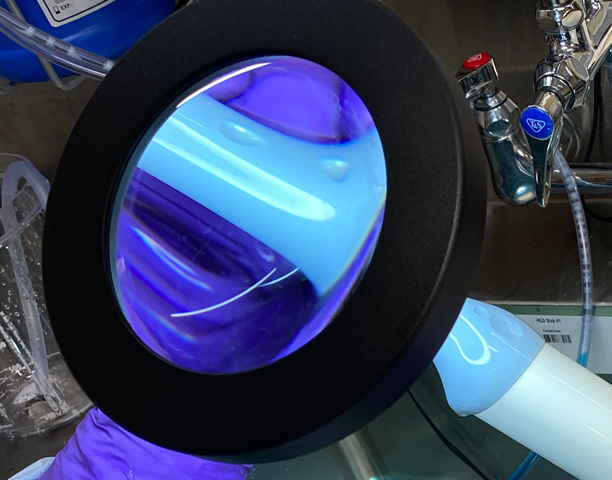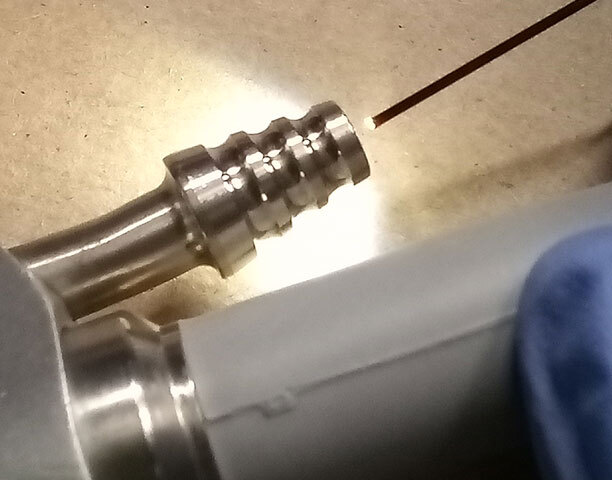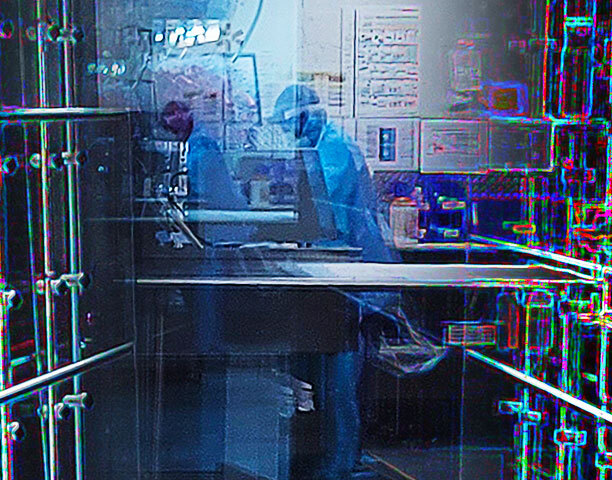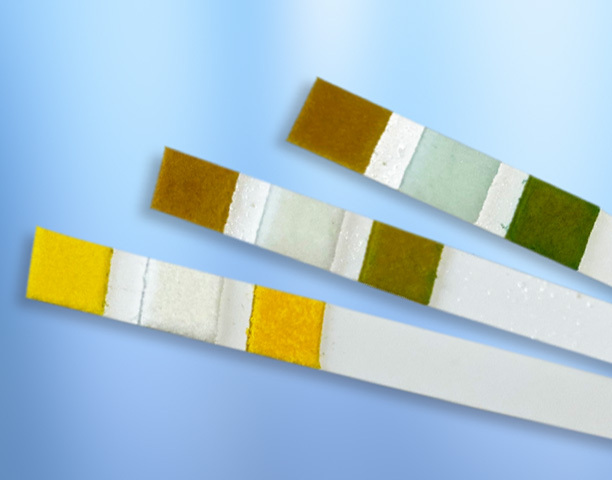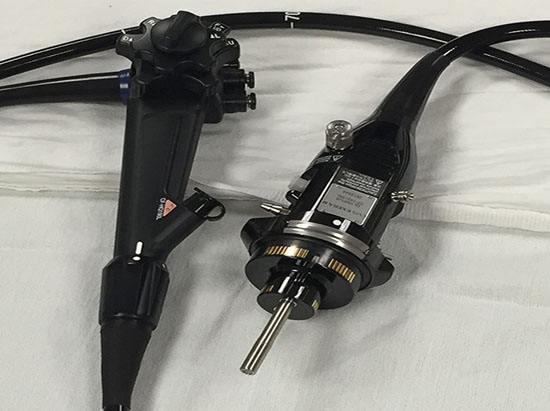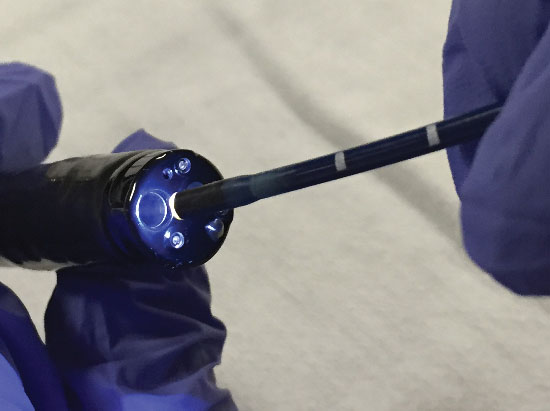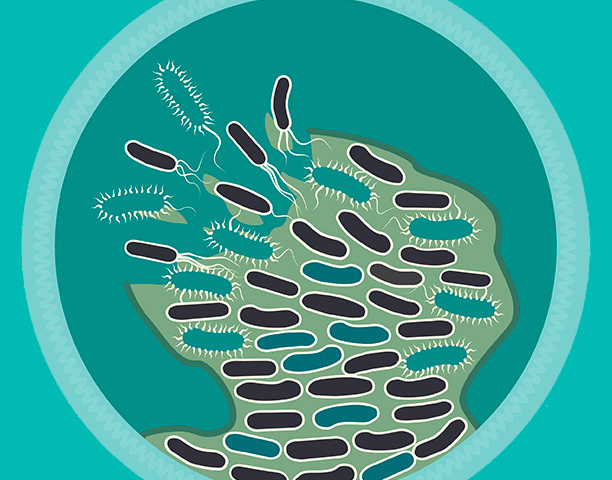Ofstead & Associates, Inc.
Catalog Advanced Search
-
Contains 6 Component(s), Includes Credits
This webinar describes common sense strategies for identifying issues and improving quality with ultrasound probes
Eligible for 1.0 contact hour | HSPA | CBSPD | RN |
Damaged or dirty ultrasound probes have been linked to infections and injuries among patients. This webinar discusses strategies for identifying ultrasound processing and maintenance issues. The presenters will provide examples of issues related to probe inventories and discuss case studies illustrating environment-of-care and processing issues discovered by sterile processing managers and infection preventionists during visits to departments. Participants will receive tips for elevating the standard of care and engaging internal stakeholders to manage risk.
Objectives
By the end of this one-hour webinar, participants will be able to:
- Provide an overview of real-world challenges related to the cleaning and disinfection of ultrasound probe systems
- Describe basic strategies for identifying ultrasound processing and maintenance practices
- Explain how sterile processing department (SPD) managers and infection preventionists (IPs) recognized and addressed ultrasound-related quality issues
Content outline
- Background and purpose
- Strategies for identifying ultrasound processing and maintenance issues
- Examples of probe inventory and usage patterns
- Case studies illustrating environment-of-care issues identified by SPD managers and IPs
- Case studies illustrating processing and maintenance issues identified by SPD managers and IPs
- Quality management strategies to elevate the standard of care
- Sponsor acknowledgement (Supported by an educational grant from Healthmark)
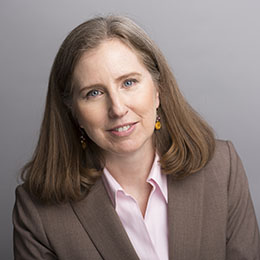
Cori L. Ofstead, MSPH
President & CEO, Ofstead & Associates
Cori Ofstead is an epidemiologist with 30 years of experience designing and conducting studies about the impact of clinical processes on patient outcomes. She has served as the Principal Investigator on numerous studies related to infection prevention, instrument processing, and vaccination against infectious diseases. Ms. Ofstead is nationally recognized for her groundbreaking research, and her studies have been published in peer-reviewed journals including CHEST, AJIC, ICHE, Urology, Journal of Hospital Infection, Endoscopy International Open, Journal of Wound Care, Gastroenterology Nursing, and Vaccine. She currently serves as a reviewer for AJIC, Endoscopy, and the Journal of Urology, and is an active member of the editorial board for AJIC. She has presented the findings of her studies at national and international conferences sponsored by the CDC, APIC, HSPA, AORN, SGNA, AGA, ASGE, and several universities. In addition, she currently serves as a preceptor for epidemiology students in the School of Public Health at the University of Minnesota.

Abby G. Smart, MPH
Research Associate, Ofstead & Associates
Abby Smart joined the Ofstead team as a research associate in 2019, where she conducts surveillance of peer‐reviewed evidence, industry information, and government reports and databases, and supports primary research and continuing education efforts. Her recent work has focused on flexible endoscope and ultrasound probe processing. She has served as coauthor on manuscripts related to endoscope processing that have been published in peer reviewed journals, including AJIC, Urology, and the Journal of Medical Virology. She has Bachelor of Arts degrees in Biology and Psychology and a Master of Public Health degree in Epidemiology. Ms. Smart has experience in a variety of research settings, including as a research assistant for a developmental psychology research group and as a technician in virology and chemistry labs where she conducted analysis for public health and environmental research. She has presented at the Midwest Psychological Association, the University of Minnesota Cognitive Psychology Seminar, and APIC Baltimore. Prior to working at Ofstead, Ms. Smart worked with adults with developmental disabilities.
-
Register
- internal users - Free!
- AMBUMEMBER - Free!
- Member - Free!
- More Information
-
Contains 6 Component(s), Includes Credits
This webinar describes common challenges associated with ultrasound probes and provides practical strategies to help you address them in your facility.
Eligible for 1.0 contact hour | HSPA | CBSPD | RN |
External and endocavitary ultrasound probes are used throughout healthcare facilities for a wide variety of procedures. Inadequate training and lack of standardization of reprocessing and maintenance protocols leads to poor adherence to best practices and raises risk of patient harm. In this webinar, two epidemiologists will discuss the basics of ultrasound probe use and reprocessing, summarize common challenges and clinical risks, and recommend strategies for quality improvement. This discussion will include an overview of ultrasound probes, recommendations for use of gel and sheaths, and evidence of patient harm associated with improperly reprocessed or maintained probes. Insights from auditing experience, guidelines, published literature, and government databases will be presented to empower frontline personnel to improve practices in their healthcare facility.
Objectives
By the end of this one-hour webinar, participants will be able to:
- Discuss clinical risks associated with contaminated or damaged ultrasound probes
- Summarize guidelines for ultrasound probe reprocessing and quality assurance
- Explain how sheaths and gel contribute to probe contamination and infection risk
- Outline strategies for reducing risks associated with the use of ultrasound probes
Content outline
- Observations from the field
- Basics on ultrasound probes
- Guidelines for ultrasound probe use and reprocessing
- Clinical risks and real-world challenges
- Strategies for assessing and improving practices
- Sponsor acknowledgement (Supported by an educational grant from Healthmark)

Cori L. Ofstead, MSPH
President & CEO, Ofstead & Associates
Cori Ofstead is an epidemiologist with 30 years of experience designing and conducting studies about the impact of clinical processes on patient outcomes. She has served as the Principal Investigator on numerous studies related to infection prevention, instrument processing, and vaccination against infectious diseases. Ms. Ofstead is nationally recognized for her groundbreaking research, and her studies have been published in peer-reviewed journals including CHEST, AJIC, ICHE, Urology, Journal of Hospital Infection, Endoscopy International Open, Journal of Wound Care, Gastroenterology Nursing, and Vaccine. She currently serves as a reviewer for AJIC, Endoscopy, and the Journal of Urology, and is an active member of the editorial board for AJIC. She has presented the findings of her studies at national and international conferences sponsored by the CDC, APIC, HSPA, AORN, SGNA, AGA, ASGE, and several universities. In addition, she currently serves as a preceptor for epidemiology students in the School of Public Health at the University of Minnesota.
-
Register
- internal users - Free!
- AMBUMEMBER - Free!
- Member - Free!
- More Information
-
Contains 6 Component(s), Includes Credits
This webinar describes the value of inspecting lumens of surgical instruments with borescopes.
Eligible for 1.0 contact hour | HSPA | CBSPD | RN |
Retained debris and residual soil can interfere with sterilization of surgical instruments and put patients at risk. This webinar discusses tools and methods for inspecting common lumened instruments, including reusable suction tips and bone shavers. The presenters will show photos and videos of unique internal features of these instruments and tissue, bone fragments, brush bristles, and other foreign debris found in fully processed instruments. Participants will receive tips for developing a visual inspection program for lumened surgical instruments and engaging internal stakeholders to manage risk.
Objectives
By the end of this webinar, participants will be able to:
- Explain the rationale for visually inspecting the lumens of surgical instruments
- Identify internal structures of surgical instruments that may impact cleaning effectiveness
- Describe debris and residues that may be detected during borescope examinations
- Discuss strategies for developing a visual inspection and quality improvement program
Content outline
- Rationale for visual inspection of lumened instruments
- Overview of the lumen inspection project
- Results of visual inspections for:
- Reusable suction tips
- Arthroscopic shavers
- Strategies for developing a lumen inspection program
- Sponsor acknowledgement (supported by an educational grant from Healthmark)

Cori L. Ofstead, MSPH
President & CEO, Ofstead & Associates
Cori Ofstead is an epidemiologist with 30 years of experience designing and conducting studies about the impact of clinical processes on patient outcomes. She has served as the Principal Investigator on numerous studies related to infection prevention, instrument processing, and vaccination against infectious diseases. Ms. Ofstead is nationally recognized for her groundbreaking research, and her studies have been published in peer-reviewed journals including CHEST, AJIC, ICHE, Urology, Journal of Hospital Infection, Endoscopy International Open, Journal of Wound Care, Gastroenterology Nursing, and Vaccine. She currently serves as a reviewer for AJIC, Endoscopy, and the Journal of Urology, and is an active member of the editorial board for AJIC. She has presented the findings of her studies at national and international conferences sponsored by the CDC, APIC, HSPA, AORN, SGNA, AGA, ASGE, and several universities. In addition, she currently serves as a preceptor for epidemiology students in the School of Public Health at the University of Minnesota.

Krystina M. Hopkins, MPH
Research Manager, Ofstead & Associates
Krystina Hopkins is a research manager with Ofstead & Associates, Inc. where she leads projects related to device processing effectiveness and environmental health, including chronic conditions, vaccination, radiation hygiene, and healthcare costs. She has an MPH in environmental health, specializing in infectious disease. Her research has been published in AJIC, ICHE, Endoscopy International Open, Journal of Wound Care, Urology, AORN Journal, BI&T (AAMI’s journal), and HSPA’s PROCESS magazine, and she is a reviewer for AORN Journal and AAMI’s BI&T. She has presented the findings of her studies at national and international conferences sponsored by the CDC, APIC, and HSPA. Ms. Hopkins has over fourteen years of hands-on health and healthcare-related research experience in diverse in-patient and outpatient settings. Prior to joining Ofstead in 2017, she supported clinical trials in environmental health, health economics, and community-based research as a research project manager at Medica Research Institute. Ms. Hopkins was also involved with projects related to molecular and microbiology, epidemiology, infectious disease, and occupational health in various roles at the University of Minnesota and the Minnesota Department of Health.
-
Register
- internal users - Free!
- AMBUMEMBER - Free!
- Member - Free!
- More Information
-
Contains 6 Component(s), Includes Credits
This webinar provides an introduction to sterile processing via virtual tours.
Eligible for 1.0 contact hour | HSPA | CBSPD | RN |
Sterile processing departments are home to highly technical and complex processes and equipment, all of which are critical for patient safety and infection control. In this webinar, we take you on a tour of two sterile processing departments, highlighting the workflow and key equipment, supplies, quality assurance tools, and PPE used in each specialized area. Participants will receive a broad overview of sterile processing procedures and learn strategies for collaborating with department personnel to improve practices and protect both patients and personnel.
Objectives
By the end of this webinar, participants will be able to:
- Explain the department layout, dirty-to-clean workflow, and activities happening in various areas within a sterile processing department
- Describe features of washer-disinfectors, automated endoscope reprocessors, and sterilization systems (liquid chemical, low-temperature gas, and steam)
- Discuss hazards during various sterile processing activities and the role of PPE in reducing risk for workers
- Identify key guidelines and standards that govern sterile processing activities and quality assurance
- List three strategies for enhancing a collaborative relationship between infection prevention and sterile processing
Content outline
- Overview and rationale for sterile processing
- Virtual tour of sterile processing departments
- Point-of-use pretreatment and transport
- Decontamination and cleaning areas
- Inspection, assembly, and pack & prep areas
- Sterilization and high-level disinfection areas
- Cooling/aeration/drying
- Storage areas
- Key standards, guidelines, and resources
- Strategies for establishing and enhancing collaboration between SPD, IP, and other units
- Sponsor acknowledgement (Supported by an educational grant from Healthmark)

Cori L. Ofstead, MSPH
President & CEO, Ofstead & Associates
Cori Ofstead is an epidemiologist with 30 years of experience designing and conducting studies about the impact of clinical processes on patient outcomes. She has served as the Principal Investigator on numerous studies related to infection prevention, instrument processing, and vaccination against infectious diseases. Ms. Ofstead is nationally recognized for her groundbreaking research, and her studies have been published in peer-reviewed journals including CHEST, AJIC, ICHE, Urology, Journal of Hospital Infection, Endoscopy International Open, Journal of Wound Care, Gastroenterology Nursing, and Vaccine. She currently serves as a reviewer for AJIC, Endoscopy, and the Journal of Urology, and is an active member of the editorial board for AJIC. She has presented the findings of her studies at national and international conferences sponsored by the CDC, APIC, HSPA, AORN, SGNA, AGA, ASGE, and several universities. In addition, she currently serves as a preceptor for epidemiology students in the School of Public Health at the University of Minnesota.

Abby G. Smart, MPH
Research Associate, Ofstead & Associates
Abby Smart joined the Ofstead team as a research associate in 2019, where she conducts surveillance of peer‐reviewed evidence, industry information, and government reports and databases, and supports primary research and continuing education efforts. Her recent work has focused on flexible endoscope and ultrasound probe processing. She has served as coauthor on manuscripts related to endoscope processing that have been published in peer reviewed journals, including AJIC, Urology, and the Journal of Medical Virology. She has Bachelor of Arts degrees in Biology and Psychology and a Master of Public Health degree in Epidemiology. Ms. Smart has experience in a variety of research settings, including as a research assistant for a developmental psychology research group and as a technician in virology and chemistry labs where she conducted analysis for public health and environmental research. She has presented at the Midwest Psychological Association, the University of Minnesota Cognitive Psychology Seminar, and APIC Baltimore. Prior to working at Ofstead, Ms. Smart worked with adults with developmental disabilities.
-
Register
- internal users - Free!
- Member - Free!
- AMBUMEMBER - Free!
- More Information
-
Contains 7 Component(s), Includes Credits
This webinar describes why it’s important to dry endoscopes and how to do it.
Eligible for 1.0 contact hour | HSPA | CBSPD | RN |
Retained moisture can foster the growth of microbes and biofilm inside endoscopes, and wet endoscopes have been linked to infections. This webinar will describe the importance of using effective, evidence-based methods for drying. The presenters will share their real-world experience using drying verification tools to evaluate patient-ready endoscopes for residual fluids. Participants will learn strategies for drying and storing endoscopes in accordance with guidelines and standards.
Objectives
By the end of this one-hour webinar, participants will be able to:
- Recognize that endoscope anatomy and reprocessing methods introduce a risk of retained moisture
- Discuss the clinical implications of retained moisture in flexible endoscopes
- Explain tools and methods for drying flexible endoscopes
- Describe current AORN, SGNA, and AAMI guidelines for drying endoscopes
- Explain strategies for detecting moisture and verifying that endoscopes are dry
Content outline
- Background and rationale for evidence-based endoscope drying methods
- Evidence from the field on drying effectiveness
- Drying tools and equipment
- Strategies for enhancing drying and storage practices
- Sponsor acknowledgement (supported by an educational grant from Healthmark)

Cori L. Ofstead, MSPH
President & CEO, Ofstead & Associates
Cori Ofstead is an epidemiologist with 30 years of experience designing and conducting studies about the impact of clinical processes on patient outcomes. She has served as the Principal Investigator on numerous studies related to infection prevention, instrument processing, and vaccination against infectious diseases. Ms. Ofstead is nationally recognized for her groundbreaking research, and her studies have been published in peer-reviewed journals including CHEST, AJIC, ICHE, Urology, Journal of Hospital Infection, Endoscopy International Open, Journal of Wound Care, Gastroenterology Nursing, and Vaccine. She currently serves as a reviewer for AJIC, Endoscopy, and the Journal of Urology, and is an active member of the editorial board for AJIC. She has presented the findings of her studies at national and international conferences sponsored by the CDC, APIC, HSPA, AORN, SGNA, AGA, ASGE, and several universities. In addition, she currently serves as a preceptor for epidemiology students in the School of Public Health at the University of Minnesota.

Krystina M. Hopkins, MPH
Research Manager, Ofstead & Associates
Krystina Hopkins is a research manager with Ofstead & Associates, Inc. where she leads projects related to device processing effectiveness and environmental health, including chronic conditions, vaccination, radiation hygiene, and healthcare costs. She has an MPH in environmental health, specializing in infectious disease. Her research has been published in AJIC, ICHE, Endoscopy International Open, Journal of Wound Care, Urology, AORN Journal, BI&T (AAMI’s journal), and HSPA’s PROCESS magazine, and she is a reviewer for AORN Journal and AAMI’s BI&T. She has presented the findings of her studies at national and international conferences sponsored by the CDC, APIC, and HSPA. Ms. Hopkins has over fourteen years of hands-on health and healthcare-related research experience in diverse in-patient and outpatient settings. Prior to joining Ofstead in 2017, she supported clinical trials in environmental health, health economics, and community-based research as a research project manager at Medica Research Institute. Ms. Hopkins was also involved with projects related to molecular and microbiology, epidemiology, infectious disease, and occupational health in various roles at the University of Minnesota and the Minnesota Department of Health.
-
Register
- internal users - Free!
- AMBUMEMBER - Free!
- Member - Free!
- More Information
-
Contains 8 Component(s), Includes Credits
This webinar describes how to use biochemical tests to evaluate endoscope cleaning.
Eligible for 1.0 contact hour | HSPA | CBSPD | RN |
New standards require cleaning verification tests for every high-risk endoscope, every time. This webinar discusses several types of cleaning verification tests and explains how to use them and interpret results. The presenters share their real-world experience using these tests with photos, videos, and case studies. Participants will learn strategies for setting up their own sustainable cleaning verification programs and using the findings to improve reprocessing outcomes.
Objectives
By the end of this one-hour webinar, participants will be able to:
- Discuss the rationale for verifying cleaning effectiveness before sterilization or HLD
- List at least three types of biochemical tests for organic soil
- Explain methods for collecting samples and conducting cleaning verification tests
- Describe current guidelines for cleaning verification during reprocessing of flexible endoscopes
- Outline strategies for designing and implementing a cleaning verification program
Content outline
- Rationale for performing cleaning verification tests
- How to conduct cleaning verification tests
- Setting expectations for cleaning verification findings
- Interpreting and acting on findings from cleaning verification tests
- Strategies for implementing a cleaning verification program
- Sponsor acknowledgement (supported by an educational grant from Healthmark)

Cori L. Ofstead, MSPH
President & CEO, Ofstead & Associates
Cori Ofstead is an epidemiologist with 30 years of experience designing and conducting studies about the impact of clinical processes on patient outcomes. She has served as the Principal Investigator on numerous studies related to infection prevention, instrument processing, and vaccination against infectious diseases. Ms. Ofstead is nationally recognized for her groundbreaking research, and her studies have been published in peer-reviewed journals including CHEST, AJIC, ICHE, Urology, Journal of Hospital Infection, Endoscopy International Open, Journal of Wound Care, Gastroenterology Nursing, and Vaccine. She currently serves as a reviewer for AJIC, Endoscopy, and the Journal of Urology, and is an active member of the editorial board for AJIC. She has presented the findings of her studies at national and international conferences sponsored by the CDC, APIC, HSPA, AORN, SGNA, AGA, ASGE, and several universities. In addition, she currently serves as a preceptor for epidemiology students in the School of Public Health at the University of Minnesota.

Krystina M. Hopkins, MPH
Research Manager, Ofstead & Associates
Krystina Hopkins is a research manager with Ofstead & Associates, Inc. where she leads projects related to device processing effectiveness and environmental health, including chronic conditions, vaccination, radiation hygiene, and healthcare costs. She has an MPH in environmental health, specializing in infectious disease. Her research has been published in AJIC, ICHE, Endoscopy International Open, Journal of Wound Care, Urology, AORN Journal, BI&T (AAMI’s journal), and HSPA’s PROCESS magazine, and she is a reviewer for AORN Journal and AAMI’s BI&T. She has presented the findings of her studies at national and international conferences sponsored by the CDC, APIC, and HSPA. Ms. Hopkins has over fourteen years of hands-on health and healthcare-related research experience in diverse in-patient and outpatient settings. Prior to joining Ofstead in 2017, she supported clinical trials in environmental health, health economics, and community-based research as a research project manager at Medica Research Institute. Ms. Hopkins was also involved with projects related to molecular and microbiology, epidemiology, infectious disease, and occupational health in various roles at the University of Minnesota and the Minnesota Department of Health.
-
Register
- internal users - Free!
- AMBUMEMBER - Free!
- Member - Free!
- More Information
-
Contains 8 Component(s), Includes Credits
This webinar shares strategies for inspecting endoscopes with lighted magnification.
Eligible for 1.0 contact hour | HSPA | CBSPD | RN |
Damaged or dirty endoscopes place patients at risk for exposures, infections, and injuries. Guidelines and standards recommend visual inspection with lighted magnification for every endoscope, every time. This webinar explains the tools and methods available for conducting visual inspections of endoscope exteriors, describes important aspects of endoscope anatomy, and provides real-world images of common defects found on a variety of endoscope models.
Objectives
By the end of this one-hour webinar, participants will be able to:
- Discuss the clinical implications of damage and debris found on endoscopes
- Explain tools and methods for conducting visual inspection with lighted magnification
- Describe several exterior defects that are commonly identified during visual inspections
- List recommendations for visual inspection of flexible endoscopes in current guidelines
- Describe risk assessment and quality improvement strategies for implementing visual inspection with lighted magnification
Content outline
- Rationale for visual inspection using lighted magnification
- Endoscope anatomy
- How to conduct visual inspections using lighted magnification
- Common findings from visual inspection with lighted magnification
- Establishing a lighted magnification program
- Sponsor acknowledgement (supported by an educational grant from Healthmark)

Cori L. Ofstead, MSPH
President & CEO, Ofstead & Associates
Cori Ofstead is an epidemiologist with 30 years of experience designing and conducting studies about the impact of clinical processes on patient outcomes. She has served as the Principal Investigator on numerous studies related to infection prevention, instrument processing, and vaccination against infectious diseases. Ms. Ofstead is nationally recognized for her groundbreaking research, and her studies have been published in peer-reviewed journals including CHEST, AJIC, ICHE, Urology, Journal of Hospital Infection, Endoscopy International Open, Journal of Wound Care, Gastroenterology Nursing, and Vaccine. She currently serves as a reviewer for AJIC, Endoscopy, and the Journal of Urology, and is an active member of the editorial board for AJIC. She has presented the findings of her studies at national and international conferences sponsored by the CDC, APIC, HSPA, AORN, SGNA, AGA, ASGE, and several universities. In addition, she currently serves as a preceptor for epidemiology students in the School of Public Health at the University of Minnesota.

Abby G. Smart, MPH
Research Associate, Ofstead & Associates
Abby Smart joined the Ofstead team as a research associate in 2019, where she conducts surveillance of peer‐reviewed evidence, industry information, and government reports and databases, and supports primary research and continuing education efforts. Her recent work has focused on flexible endoscope and ultrasound probe processing. She has served as coauthor on manuscripts related to endoscope processing that have been published in peer reviewed journals, including AJIC, Urology, and the Journal of Medical Virology. She has Bachelor of Arts degrees in Biology and Psychology and a Master of Public Health degree in Epidemiology. Ms. Smart has experience in a variety of research settings, including as a research assistant for a developmental psychology research group and as a technician in virology and chemistry labs where she conducted analysis for public health and environmental research. She has presented at the Midwest Psychological Association, the University of Minnesota Cognitive Psychology Seminar, and APIC Baltimore. Prior to working at Ofstead, Ms. Smart worked with adults with developmental disabilities.
-
Register
- internal users - Free!
- AMBUMEMBER - Free!
- Member - Free!
- More Information
-
Contains 8 Component(s), Includes Credits
This webinar shares tips and tricks for using borescopes during visual inspection.
Eligible for 1.0 contact hour | HSPA | CBSPD | RN |
This webinar describes methods for using borescopes, which are tools that can “scope the scope” to make sure ports and channels are clean and in good condition. Presenters will provide an introduction to the anatomy of various endoscope models and provide real-world photos and videos of brand-new scopes and defects observed during borescope exams. Participants will learn strategies for setting up a borescope program and responding to findings.
Objectives
By the end of this webinar, participants will be able to:
- Discuss the clinical implications of damage and debris found inside endoscopes
- Explain tools and methods for conducting borescope examinations of endoscope interiors
- Describe several defects that are commonly identified during borescope exams
- List recommendations for visual inspection of flexible endoscopes in current guidelines
- Describe risk assessment and quality improvement strategies
Content outline
- Rationale for visually inspecting channels and ports
- Endoscope anatomy
- How to conduct borescope exams
- Common findings from borescope exams
- Establishing a borescope program
- Sponsor acknowledgement (supported by an educational grant from Healthmark)

Cori L. Ofstead, MSPH
President & CEO, Ofstead & Associates
Cori Ofstead is an epidemiologist with 30 years of experience designing and conducting studies about the impact of clinical processes on patient outcomes. She has served as the Principal Investigator on numerous studies related to infection prevention, instrument processing, and vaccination against infectious diseases. Ms. Ofstead is nationally recognized for her groundbreaking research, and her studies have been published in peer-reviewed journals including CHEST, AJIC, ICHE, Urology, Journal of Hospital Infection, Endoscopy International Open, Journal of Wound Care, Gastroenterology Nursing, and Vaccine. She currently serves as a reviewer for AJIC, Endoscopy, and the Journal of Urology, and is an active member of the editorial board for AJIC. She has presented the findings of her studies at national and international conferences sponsored by the CDC, APIC, HSPA, AORN, SGNA, AGA, ASGE, and several universities. In addition, she currently serves as a preceptor for epidemiology students in the School of Public Health at the University of Minnesota.

Abby G. Smart, MPH
Research Associate, Ofstead & Associates
Abby Smart joined the Ofstead team as a research associate in 2019, where she conducts surveillance of peer‐reviewed evidence, industry information, and government reports and databases, and supports primary research and continuing education efforts. Her recent work has focused on flexible endoscope and ultrasound probe processing. She has served as coauthor on manuscripts related to endoscope processing that have been published in peer reviewed journals, including AJIC, Urology, and the Journal of Medical Virology. She has Bachelor of Arts degrees in Biology and Psychology and a Master of Public Health degree in Epidemiology. Ms. Smart has experience in a variety of research settings, including as a research assistant for a developmental psychology research group and as a technician in virology and chemistry labs where she conducted analysis for public health and environmental research. She has presented at the Midwest Psychological Association, the University of Minnesota Cognitive Psychology Seminar, and APIC Baltimore. Prior to working at Ofstead, Ms. Smart worked with adults with developmental disabilities.
-
Register
- internal users - Free!
- AMBUMEMBER - Free!
- Member - Free!
- More Information
-
Contains 6 Component(s), Includes Credits
This webinar unlocks the keys to using the scientific method and evidence to support decision-making about factors that impact health and safety.
Eligible for 1.0 contact hour | HSPA | CBSPD | RN |
What do dark chocolate, exercise, and fresh air have in common? In this webinar, three scientists will explain the scientific method and describe how to critically evaluate information about these stress-reducing interventions. Next, the presenters will model how to leverage evidence to support quality improvement and resource acquisition in healthcare facilities. Participants will learn how to seek support from stakeholders and incorporate scientific evidence into concise, effective communications for decision-makers.
Objectives
By the end of this webinar, participants will be able to:
- Explain how the scientific method can be used to evaluate the impact of wellness interventions including exercise, fresh air, and eating dark chocolate
- Provide at least three ways to assess the credibility of informational sources
- Describe how scientific approaches can be used to support decision-making and improve practices
- List three strategies for leveraging scientific evidence when collaborating with other stakeholders to address personnel and resource needs
Content outline
- Background and rationale
- Foundations of science and critical thinking
- Evaluating sources of information
- Using scientific thinking to support strategy development
- Developing a communication strategy to support decision-making
- Sponsor acknowledgement (Supported by an educational grant from Healthmark)

Cori L. Ofstead, MSPH
President & CEO, Ofstead & Associates
Cori Ofstead is an epidemiologist with 30 years of experience designing and conducting studies about the impact of clinical processes on patient outcomes. She has served as the Principal Investigator on numerous studies related to infection prevention, instrument processing, and vaccination against infectious diseases. Ms. Ofstead is nationally recognized for her groundbreaking research, and her studies have been published in peer-reviewed journals including CHEST, AJIC, ICHE, Urology, Journal of Hospital Infection, Endoscopy International Open, Journal of Wound Care, Gastroenterology Nursing, and Vaccine. She currently serves as a reviewer for AJIC, Endoscopy, and the Journal of Urology, and is an active member of the editorial board for AJIC. She has presented the findings of her studies at national and international conferences sponsored by the CDC, APIC, HSPA, AORN, SGNA, AGA, ASGE, and several universities. In addition, she currently serves as a preceptor for epidemiology students in the School of Public Health at the University of Minnesota.

Krystina M. Hopkins, MPH
Research Manager, Ofstead & Associates
Krystina Hopkins is a research manager with Ofstead & Associates, Inc. where she leads projects related to device processing effectiveness and environmental health, including chronic conditions, vaccination, radiation hygiene, and healthcare costs. She has an MPH in environmental health, specializing in infectious disease. Her research has been published in AJIC, ICHE, Endoscopy International Open, Journal of Wound Care, Urology, AORN Journal, BI&T (AAMI’s journal), and HSPA’s PROCESS magazine, and she is a reviewer for AORN Journal and AAMI’s BI&T. She has presented the findings of her studies at national and international conferences sponsored by the CDC, APIC, and HSPA. Ms. Hopkins has over fourteen years of hands-on health and healthcare-related research experience in diverse in-patient and outpatient settings. Prior to joining Ofstead in 2017, she supported clinical trials in environmental health, health economics, and community-based research as a research project manager at Medica Research Institute. Ms. Hopkins was also involved with projects related to molecular and microbiology, epidemiology, infectious disease, and occupational health in various roles at the University of Minnesota and the Minnesota Department of Health.

Abby G. Smart, MPH
Research Associate, Ofstead & Associates
Abby Smart joined the Ofstead team as a research associate in 2019, where she conducts surveillance of peer‐reviewed evidence, industry information, and government reports and databases, and supports primary research and continuing education efforts. Her recent work has focused on flexible endoscope and ultrasound probe processing. She has served as coauthor on manuscripts related to endoscope processing that have been published in peer reviewed journals, including AJIC, Urology, and the Journal of Medical Virology. She has Bachelor of Arts degrees in Biology and Psychology and a Master of Public Health degree in Epidemiology. Ms. Smart has experience in a variety of research settings, including as a research assistant for a developmental psychology research group and as a technician in virology and chemistry labs where she conducted analysis for public health and environmental research. She has presented at the Midwest Psychological Association, the University of Minnesota Cognitive Psychology Seminar, and APIC Baltimore. Prior to working at Ofstead, Ms. Smart worked with adults with developmental disabilities.
-
Register
- internal users - Free!
- AMBUMEMBER - Free!
- Member - Free!
- More Information
-
Contains 6 Component(s), Includes Credits
This webinar dives into the nitty-gritty of biofilm and lays out strategies for how you can keep it off your medical devices and instruments.
Eligible for 1.0 contact hour | HSPA | CBSPD | RN |
Soil, bioburden, biofilm… What does it mean for your sterile processing department? Biofilm adheres to surfaces, resists cleaning and disinfection efforts, and can foster antibiotic resistance. In this webinar, two presenters with expertise in epidemiology and microbiology explain the different types of residual organic debris that can be left behind due to inadequate reprocessing. They will discuss study findings and outbreak investigations and explore the possible roles of residual soil, damage, and retained moisture in biofilm development. Participants will learn how to develop and implement multifaceted policies and workflows to address factors contributing to biofilm formation in their departments.
Objectives
By the end of this webinar, participants will be able to:
- Explain the difference between soil, bioburden, and biofilm
- Discuss the impact of biofilm on reprocessing effectiveness for reusable medical instruments
- Describe the role of process controls, visual inspection, cleaning verification, and microbial surveillance in preventing biofilm-related problems
- List strategies for reducing biofilm and improving reprocessing outcomes
Content outline
- Differences between soil, bioburden, and biofilm
- Clinical implications of biofilm on medical devices
- Theory and evidence on reprocessing effectiveness
- Reprocessing challenges that contribute to biofilm
- Strategies for improving practices and reducing biofilm
- Sponsor acknowledgement (Supported by an educational grant from Healthmark)

Cori L. Ofstead, MSPH
President & CEO, Ofstead & Associates
Cori Ofstead is an epidemiologist with 30 years of experience designing and conducting studies about the impact of clinical processes on patient outcomes. She has served as the Principal Investigator on numerous studies related to infection prevention, instrument processing, and vaccination against infectious diseases. Ms. Ofstead is nationally recognized for her groundbreaking research, and her studies have been published in peer-reviewed journals including CHEST, AJIC, ICHE, Urology, Journal of Hospital Infection, Endoscopy International Open, Journal of Wound Care, Gastroenterology Nursing, and Vaccine. She currently serves as a reviewer for AJIC, Endoscopy, and the Journal of Urology, and is an active member of the editorial board for AJIC. She has presented the findings of her studies at national and international conferences sponsored by the CDC, APIC, HSPA, AORN, SGNA, AGA, ASGE, and several universities. In addition, she currently serves as a preceptor for epidemiology students in the School of Public Health at the University of Minnesota.

Krystina M. Hopkins, MPH
Research Manager, Ofstead & Associates
Krystina Hopkins is a research manager with Ofstead & Associates, Inc. where she leads projects related to device processing effectiveness and environmental health, including chronic conditions, vaccination, radiation hygiene, and healthcare costs. She has an MPH in environmental health, specializing in infectious disease. Her research has been published in AJIC, ICHE, Endoscopy International Open, Journal of Wound Care, Urology, AORN Journal, BI&T (AAMI’s journal), and HSPA’s PROCESS magazine, and she is a reviewer for AORN Journal and AAMI’s BI&T. She has presented the findings of her studies at national and international conferences sponsored by the CDC, APIC, and HSPA. Ms. Hopkins has over fourteen years of hands-on health and healthcare-related research experience in diverse in-patient and outpatient settings. Prior to joining Ofstead in 2017, she supported clinical trials in environmental health, health economics, and community-based research as a research project manager at Medica Research Institute. Ms. Hopkins was also involved with projects related to molecular and microbiology, epidemiology, infectious disease, and occupational health in various roles at the University of Minnesota and the Minnesota Department of Health.
-
Register
- internal users - Free!
- AMBUMEMBER - Free!
- Member - Free!
- More Information
